12. January 2015
Authors: Simon Häusler, Jannic MascelloResearch
We started with the topic of Sounding. First we were a bit limited in visualizing our ideas because we didn’t know how to show sound. Sound itself is hard to show because sound waves are normally invisible. We were inspired by a video of sound artists which used several physical phenomena to visualize sound waves. We took one of the phenomena and tried to recreate it. For this we built a little speaker which we protected with latex gloves. Latex itself was the best material because of its flexibility to transfer the vibration of the speaker to the testing material. First we tested water which made nice structures, after we tried granulated sugar which didn’t work well because in the end it always showed the same concentric pattern. The speaker hadn’t much power but it was enough to move the material and make the sound waves visible. In this first phase, we weren’t able to capture the patterns because we didn’t know how to do it. But we made al lot of videos to keep in mind which sounds revealed the best patterns and structures.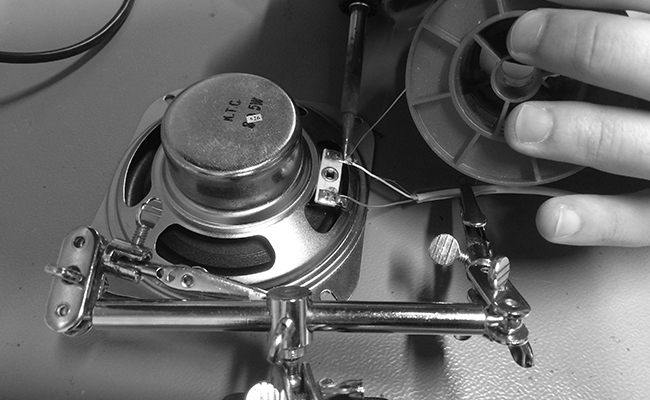
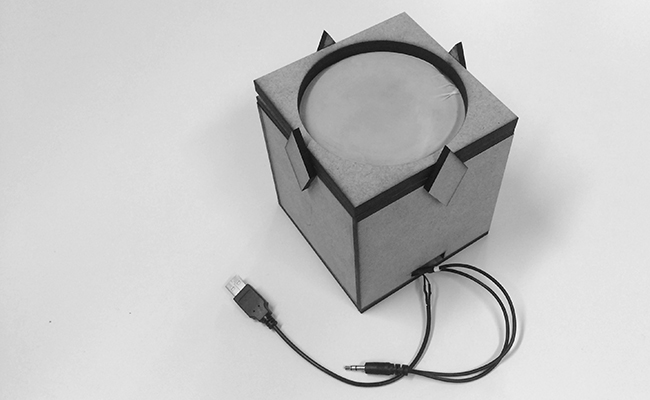
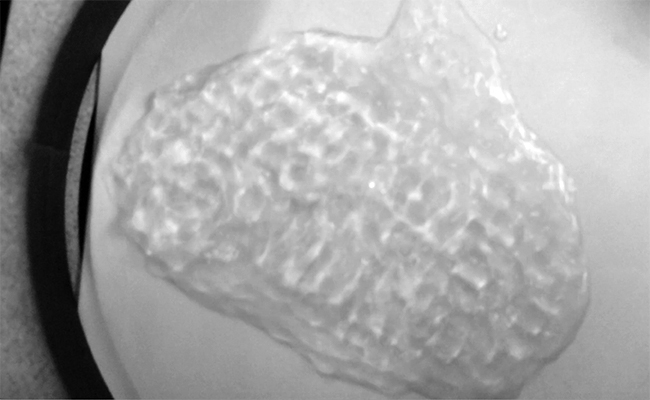
Making sound visible
We thought, that the speaker-method worked quite well and that we wanted to continue on this path. However, the first speaker we built was not strong enough for the materials we wanted to test. So we decided to buy a bigger subwoofer system.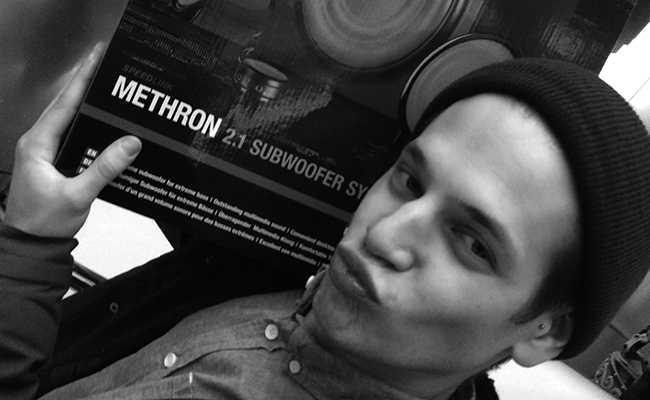 It was a big challenge to rebuild the subwoofer as we needed him finally. He must not be damaged so that it worked perfectly and it was possible to use him as a sound-system after the module. Also had a space to be found in which we were allowed to be loud. After we found a room we started immediately to undress it with protective film. The subwoofer also had to be well protected, for that we casted him out with silicone.
It was a big challenge to rebuild the subwoofer as we needed him finally. He must not be damaged so that it worked perfectly and it was possible to use him as a sound-system after the module. Also had a space to be found in which we were allowed to be loud. After we found a room we started immediately to undress it with protective film. The subwoofer also had to be well protected, for that we casted him out with silicone.
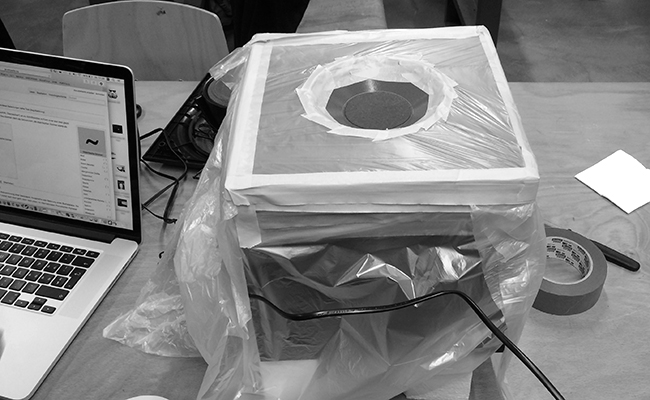
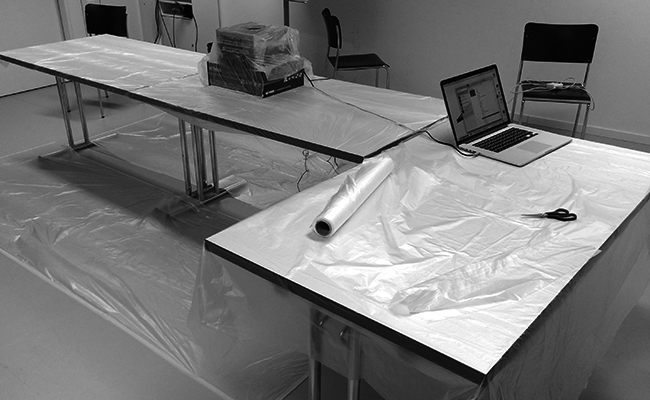 Now we were ready to start. We had great difficulty to find a suitable material that reproduces the sound waves best. We tried a few materials like wax, melted sugar, corn starch and acryl color. What we also tried was to cure the generated patterns. This didn’t work with any of the used materials for various reasons. The biggest problem was the vibration of the subwoofer which made the pattern during curing flat again. So we looked first for a material that showed the sound waves best. Surprisingly the best material was just normal water. For better contrast we added a bit white acryl color.
Now we were ready to start. We had great difficulty to find a suitable material that reproduces the sound waves best. We tried a few materials like wax, melted sugar, corn starch and acryl color. What we also tried was to cure the generated patterns. This didn’t work with any of the used materials for various reasons. The biggest problem was the vibration of the subwoofer which made the pattern during curing flat again. So we looked first for a material that showed the sound waves best. Surprisingly the best material was just normal water. For better contrast we added a bit white acryl color.
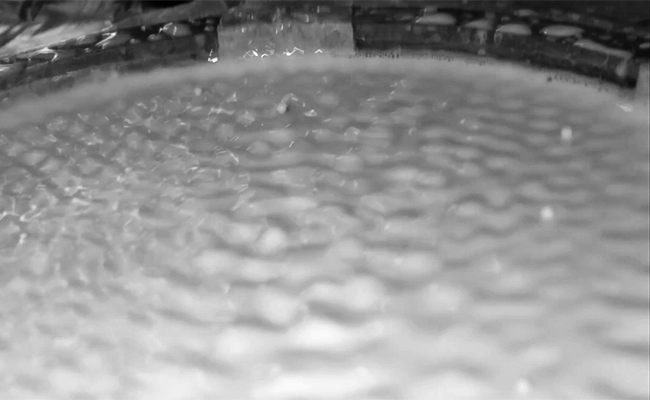 Still not solved was the problem with capturing the patterns. First, we wanted to record the shapes using 3D scanning. But that did not work because the technology is too slow and the patterns disintegrate immediately after they are incurred. We found out, that the 3D printing software Cura is able to extrude two-dimensional pictures into three-dimensional forms.
Still not solved was the problem with capturing the patterns. First, we wanted to record the shapes using 3D scanning. But that did not work because the technology is too slow and the patterns disintegrate immediately after they are incurred. We found out, that the 3D printing software Cura is able to extrude two-dimensional pictures into three-dimensional forms.
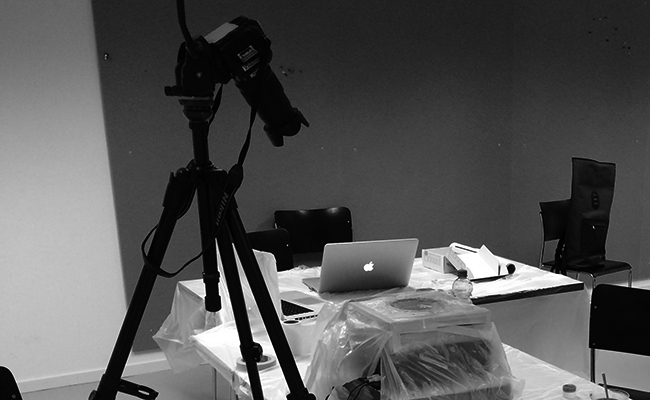 Dealing with the lighting was crucial as the light was later influence the pattern. But the light could also be used to achieve another high-low effect. The part that was the closest to the light lost much of its structure in the extrusion.
Dealing with the lighting was crucial as the light was later influence the pattern. But the light could also be used to achieve another high-low effect. The part that was the closest to the light lost much of its structure in the extrusion.
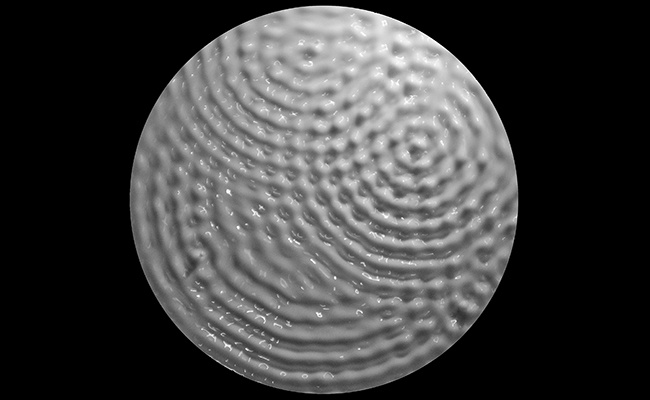
Producing sound patterns
In order to achieve an optimal result in Cura a lot of patience was needed. We played a lot with the parameters we were able to change in Cura. When printing, we always had to keep an eye on the time factor and couldn’t change the parameters too extreme. We had big problems with the 3D printers because they were not very reliable. First the quality of the prints wasn't good enough for what we needed them. After testing several printers we were able to print a good pattern on the Ultimaker 2.
We had big problems with the 3D printers because they were not very reliable. First the quality of the prints wasn't good enough for what we needed them. After testing several printers we were able to print a good pattern on the Ultimaker 2.
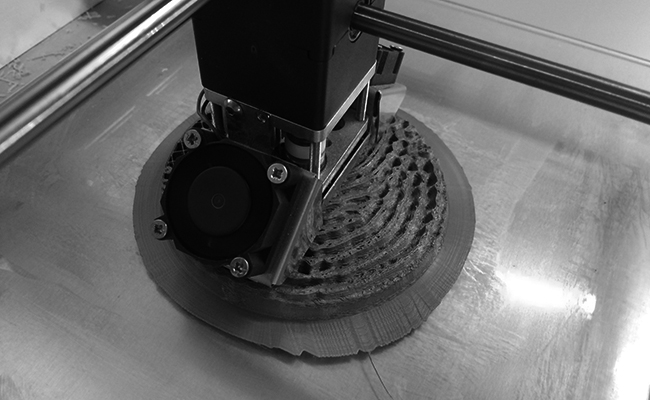 After the introduction of the Form One 3D printers we were able to produce highly precise prototypes of the patterns. Surprisingly, Photoshop was the best tool to extrude the pictures for the Form One printer.
After the introduction of the Form One 3D printers we were able to produce highly precise prototypes of the patterns. Surprisingly, Photoshop was the best tool to extrude the pictures for the Form One printer.
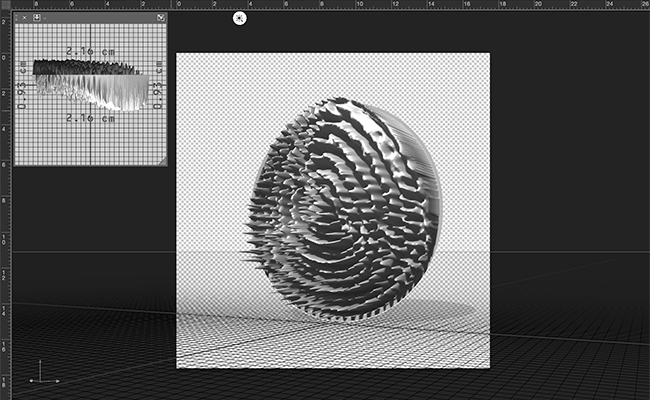 However, this printing method with the laser needed much more time than the ultimaker. Time we unfortunately had not at that time, but we did two prototypes with this method.
However, this printing method with the laser needed much more time than the ultimaker. Time we unfortunately had not at that time, but we did two prototypes with this method.
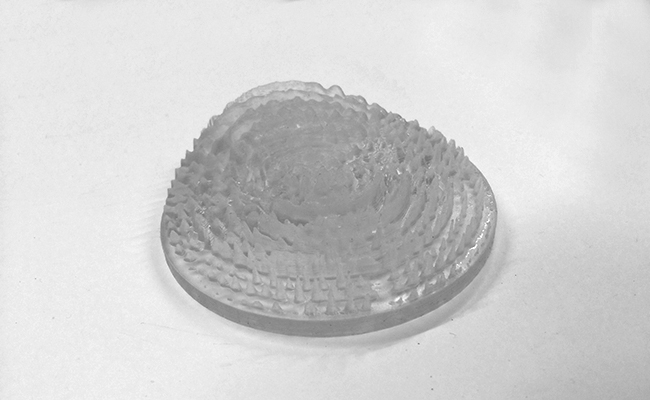
Concept of touching sound
We didn't know for a long time what we could use these patterns for. Most of the people who saw the printed patterns wanted to take them in hand and feel the structure. So we thought it would be a nice idea to make sound visible and touchable. So we created a mold made of silicon of the best pattern an wanted to reproduce it with different materials.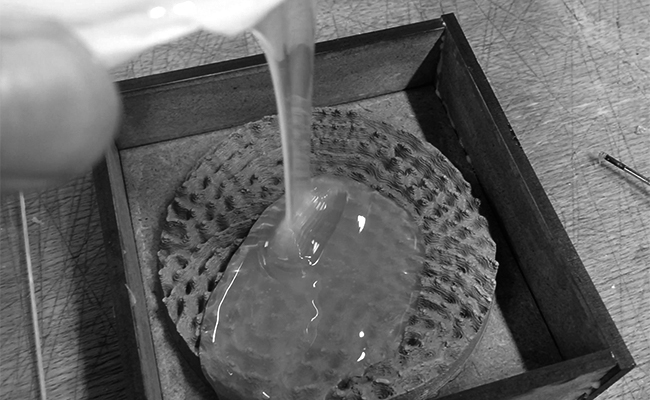 The materials should have different characteristics to achieve different haptics and feelings. For that we looked for materials that would work easily with the silicon mold. We tried to reduce the colors to black and white, so the touching gets more interesting when you can't see what material it is.
The materials should have different characteristics to achieve different haptics and feelings. For that we looked for materials that would work easily with the silicon mold. We tried to reduce the colors to black and white, so the touching gets more interesting when you can't see what material it is.
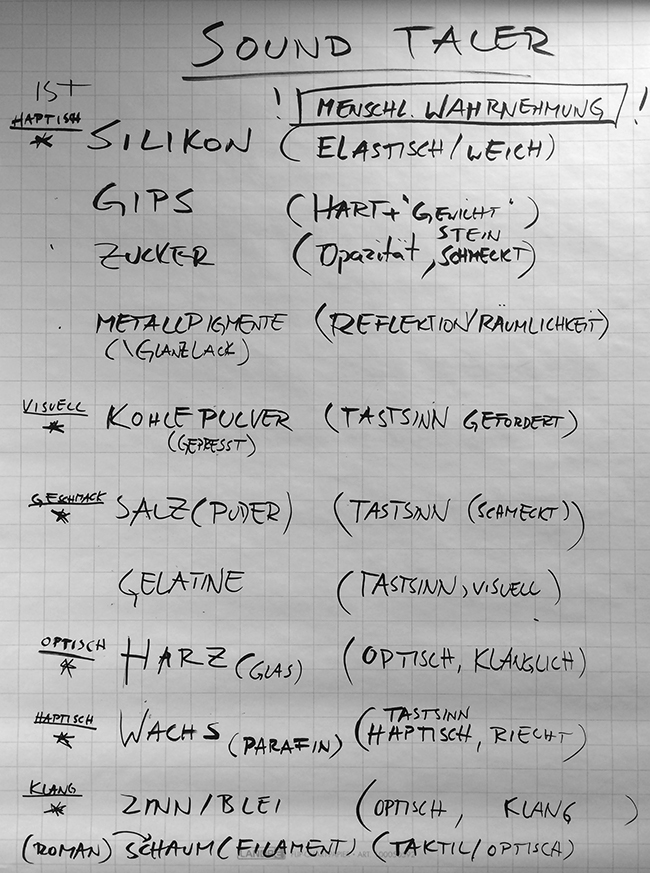 Materials like gypsum worked on the first time, others like sugar required several attempts. Finally we were able to produce prototypes out of gypsum, granulated sugar, caramel, wax, epoxy resin and the 3D printer. Unfortunately we couldn't do one out of metal because it would take too much time. We tried to fake the metal by painting an old 3D printer prototype with gold. This worked quite well and made the structures of the pattern clearly visible.
Final results
This pattern shows the song "New York, New York" from Frank Sinatra at 01:38.
Materials like gypsum worked on the first time, others like sugar required several attempts. Finally we were able to produce prototypes out of gypsum, granulated sugar, caramel, wax, epoxy resin and the 3D printer. Unfortunately we couldn't do one out of metal because it would take too much time. We tried to fake the metal by painting an old 3D printer prototype with gold. This worked quite well and made the structures of the pattern clearly visible.
Final results
This pattern shows the song "New York, New York" from Frank Sinatra at 01:38.
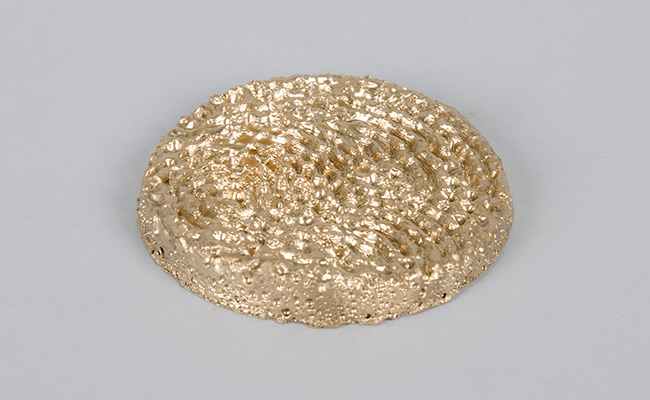 Basic form made of caramel, painted with gold.
Basic form made of caramel, painted with gold.
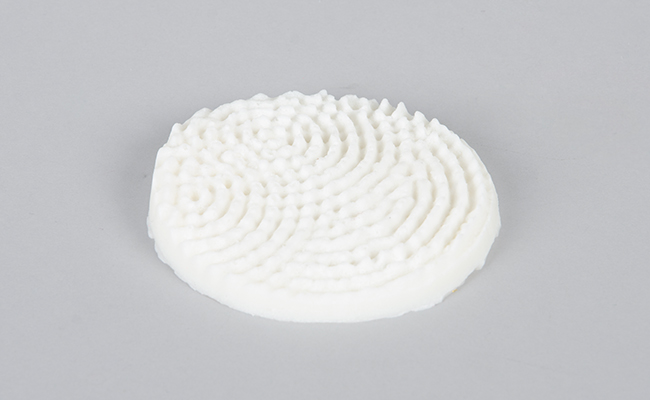 Pattern made of parafin wax.
Pattern made of parafin wax.
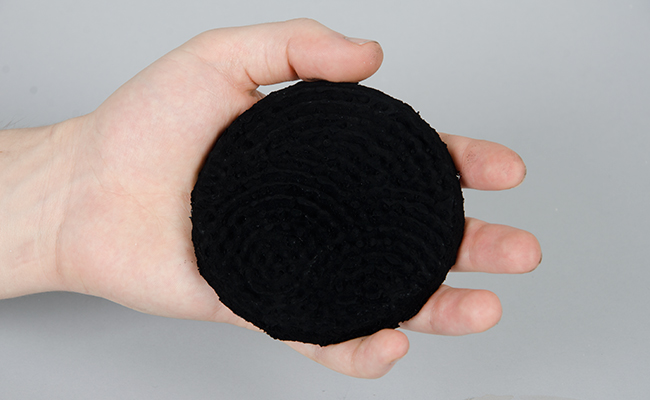 Basic form made of gypsum, coated with coal pigments.
Basic form made of gypsum, coated with coal pigments.
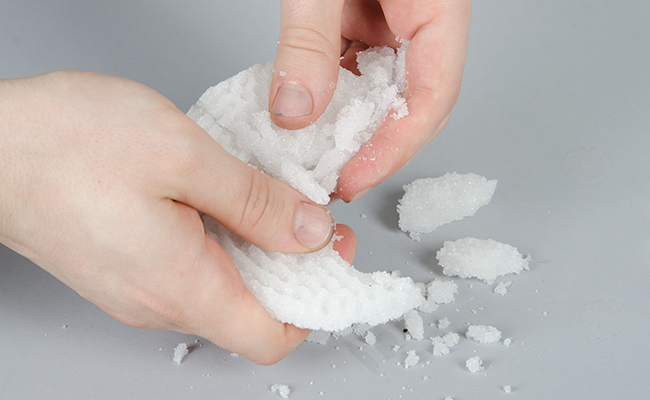 Basic form of granulated sugar mixed with water, extremely porous.
Basic form of granulated sugar mixed with water, extremely porous.
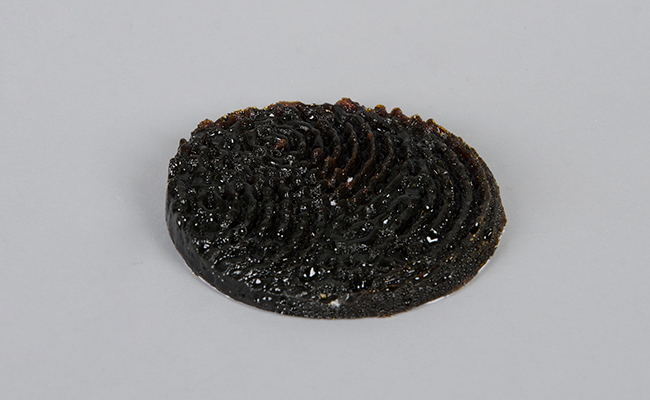
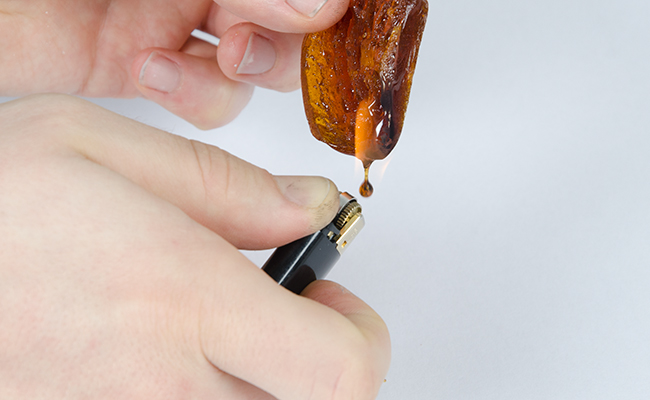 Pattern made of caramel.
Pattern made of caramel.
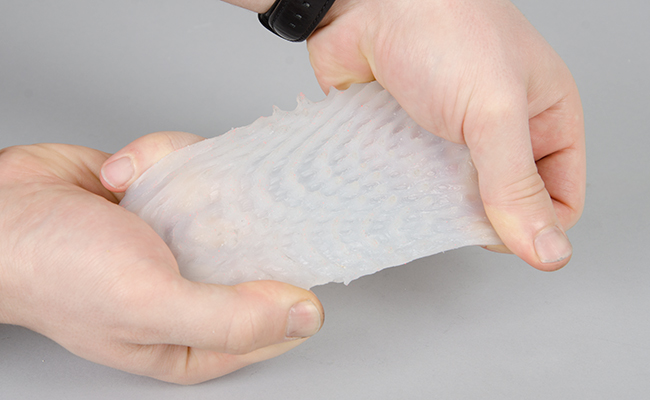 Pattern made of silicone.
Pattern made of silicone.
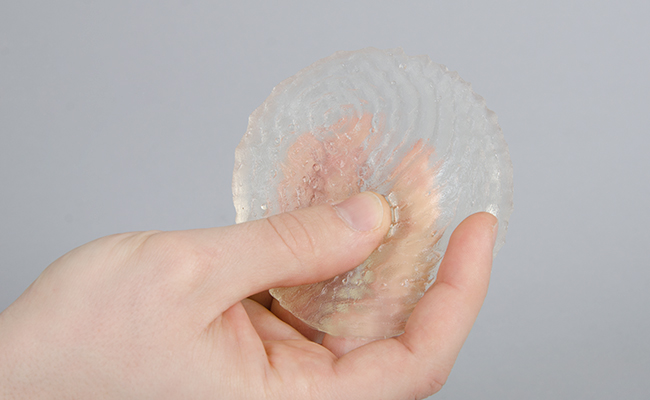 Pattern made of gelatin.
Pattern made of gelatin.
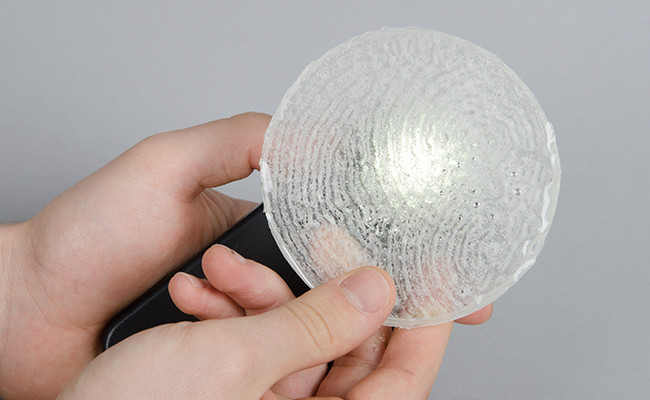 Pattern made of epoxy resin.
Pattern made of epoxy resin.
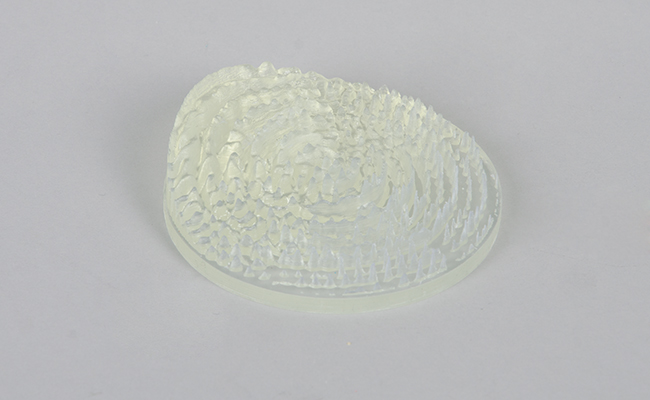 This pattern shows the song "Drop it like its hot" from Snoop Dogg at 02:14. Its printed with the From One printer.
This pattern shows the song "Drop it like its hot" from Snoop Dogg at 02:14. Its printed with the From One printer.
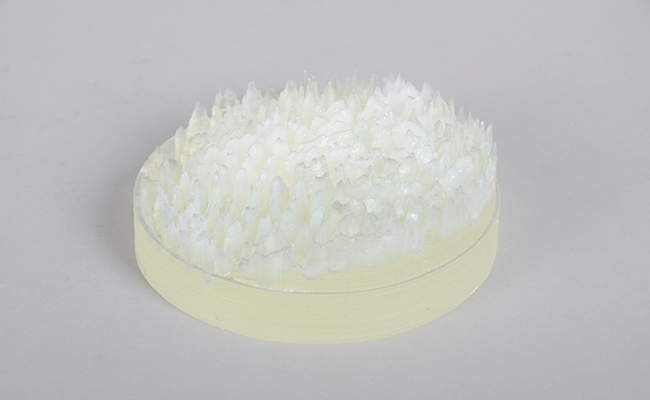 This patterns shows "Beethovens 5th" at 00:03.
This patterns shows "Beethovens 5th" at 00:03.